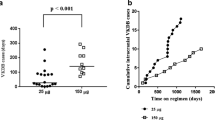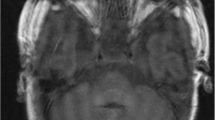Abstract
In 1995, a new water-soluble mixed-micellar analogue of vitamin K1 (Konakion MM paediatric) was introduced in Switzerland to replace the formerly used fat-soluble Konakion drops for the prevention of vitamin K1-deficiency-bleeding (VKDB) in infants. According to the new guidelines, an oral dose of 2 mg is given after birth and again on the 4th day of life. We examined the compliance with these guidelines and the impact on the incidence of VKDB. To assess compliance, questionnaires were sent to all hospitals with delivery services 6 months after the introduction of the new guidelines. Using the database of the Swiss Paediatric Surveillance Unit (SPSU) which records rare paediatric diseases, we assessed the incidence of VKDB in Switzerland between July 1995 and June 1998. In addition, we determined the precise circumstances under which the episodes of VKDB occurred. More than 99% of infants received vitamin K1 prophylaxis. Since July 1995, 93% of newborns have received prophylaxis according to the new guidelines; the remaining infants were given fat-soluble Konakion drops or parenteral vitamin K1. Within 3 years, one case of classical and 12 cases of late-onset VKDB (11 confirmed, 1 probable) were reported to the SPSU. Of the 11 confirmed late-onset cases, 7 received the recommended prophylaxis, whereas 3 had not and 1 had been given fat-soluble Konakion drops. All confirmed cases of late-onset VKDB occurred in fully breast-fed infants and 8 of 11 had hepatobiliary disease.
Conclusion With the introduction of two oral doses of a mixed-micellar vitamin K1 preparation administered in the 1st week of life, the incidence of late vitamin K1-deficiency-bleeding has decreased from 7.2:100 000 between 1986–1987 to 2.8:100 000 between 1995 and 1998. This regimen may be suitable for prophylaxis of vitamin K1-deficiency-bleeding, however, it does not fully protect infants with cholestatic disease from late-onset bleeding. If oral prophylaxis is considered for these infants, vitamin K1 has to be administered repeatedly to all infants during the breast feeding period.
Similar content being viewed by others
Author information
Authors and Affiliations
Additional information
Received: 13 October 1998 / Accepted in revised form: 5 January 1999
Rights and permissions
About this article
Cite this article
Schubiger, G., Stocker, C., Bänziger, O. et al. Oral vitamin K1 prophylaxis for newborns with a new mixed-micellar preparation of phylloquinone: 3 years experience in Switzerland. Eur J Pediatr 158, 599–602 (1999). https://doi.org/10.1007/s004310051155
Issue Date:
DOI: https://doi.org/10.1007/s004310051155




